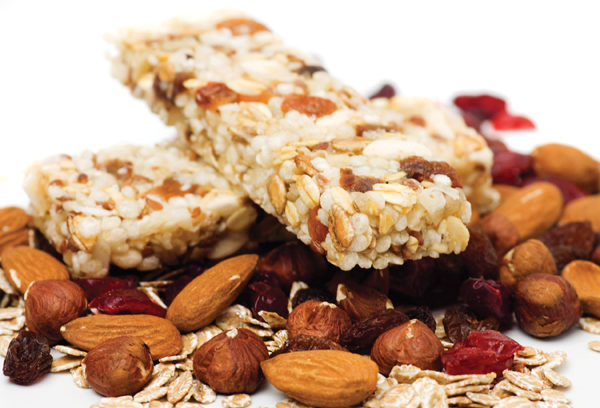Snack foods can be a blessing or a curse. Done well, a nutrient-dense pick-me-up is an important tool in helping to maintain a proper weight, healthy blood sugar levels, proper focus and good energy. But if you regularly pick the wrong snacks, well, expect the opposite to happen: weight gain, see-saw blood sugar and trouble concentrating.
Unfortunately, many Americans are choosing to nosh on snacks from the latter category. “No matter their age, Americans snack too much and too often, and usually on processed food made with artificial colors and flavors,” states Brad Sterl, CEO of Rustic Crust, Pittsfield, NH. “By making uninformed snack choices, we’ve become a nation at risk in terms of our health.”
But with the right options, retailers can steer shoppers to tasty, fulfilling snacks that will get them through the day with vigor.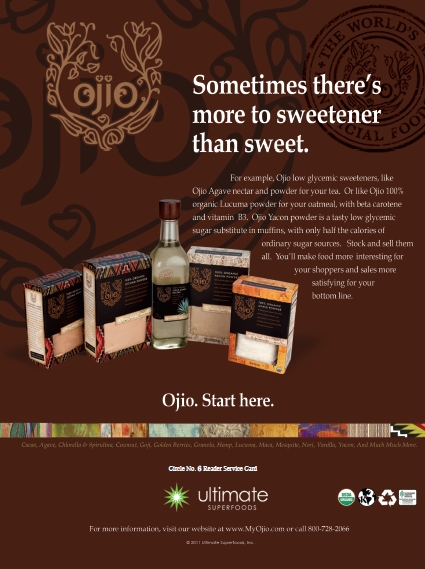
What’s the Matter with Kids’ Snacks Today?
Many blame the increased popularity of snacking on the hectic lifestyles that Americans choose to call their own. Between running from the gym to buying groceries to picking up the kids at soccer practice, a balanced lunch can very quickly take the form of a sports drink and a candy bar—and then a large coffee and a donut an hour later. States Matt Herzog, president of Funky Monkey Snacks, Fishers, IN, “We’re living such fast-paced lives these days. As adults, as parents, as teens and as children, we just don’t have time for actual meals.”
Angie Bastian, co-founder and president of Angie’s Kettle Corn, North Mankato, MN, cites David Zinczenko, author of Eat This Not That, who says that 56% of Americans snack at least three times a day. “That figure is up from 42% in 2001–2002, a growth of 14%,” she states.
Furthermore, the 2009 A Look into the Future of Eating report from The NPD Group, Inc., indicates that morning snacking will grow 23% and in-home afternoon snacks will climb 19% between 2008 and 2018 (1). “We’re seeing snacking on the rise; even fast-food restaurants are capitalizing on meal-replacement opportunities by offering snack menus and snack sizes,” says Bastian.
Again, snacks aren’t a bad thing, if the portions are sensible and if the nutritional quality is high. But, the opposite was found to be true of kids’ snacking habits. In a nationwide survey of 31,000 children ages two through 18, researchers 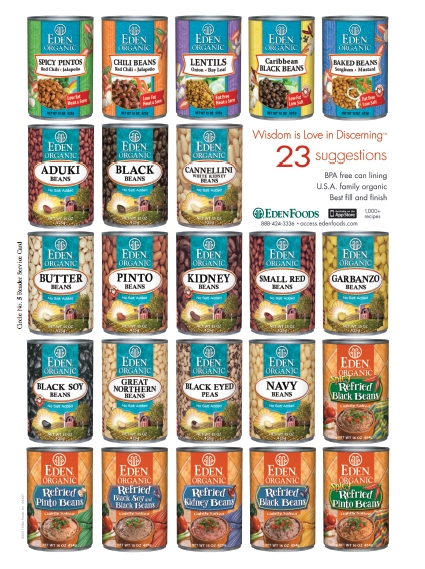 discovered that kids were munching on about three snacks per day; a striking 20% of kids were eating as many as six snacks daily. That’s like having a snack every two to three waking hours! Contrast that with the fact that children ate one snack per day just 30 years ago. Today, some 586 calories come from kids’ daily snacks, which is 200 calories more than what was eaten years ago. Unfortunately, much of these calories aren’t from good sources. In fact, kids are eating less fruit and drinking less milk, while bumping up their intake of salty snacks and sugary soda, candy and juice (2).
discovered that kids were munching on about three snacks per day; a striking 20% of kids were eating as many as six snacks daily. That’s like having a snack every two to three waking hours! Contrast that with the fact that children ate one snack per day just 30 years ago. Today, some 586 calories come from kids’ daily snacks, which is 200 calories more than what was eaten years ago. Unfortunately, much of these calories aren’t from good sources. In fact, kids are eating less fruit and drinking less milk, while bumping up their intake of salty snacks and sugary soda, candy and juice (2).
Mothers—as many households’ main grocery shoppers—may be the primary targets for education about healthy snacks. Ellen Briggs, founder and CEO of Family Food Experts (home of the Kid Kritics Approved seals), Deerfield Beach, FL, believes that moms still have the most purchasing power for a family’s prepackaged and fresh snack foods and should be encouraged to make the healthiest choices possible.
This is especially true of parents of little children who rely on snacks, and rightly so, says Gael Orr, communications manager for Once Again Nut Butter, Nunda, NY. “Young children need more calories because they are growing and their stomachs are smaller. Typically, snacks and smaller meals rather than three larger meals a day seem to help,” she says.
Perhaps, it’s time to think of snacks as less of a stopgap for hunger and more of an opportunity for health. 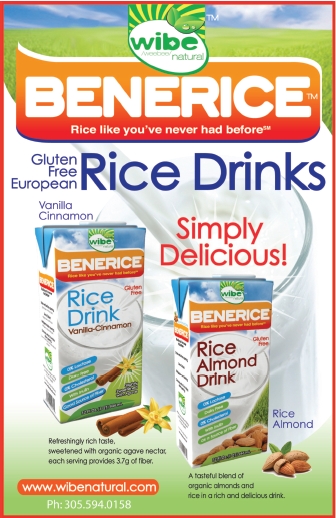
Herein may be where the trouble lies, particularly for pre-teens and teens. This group loves to snack, and often doesn’t make great nutritional choices. Even if healthy munchies are sent in their lunches, this group is old enough to buy (or trade) snacks on their own with no one watching. “Teens, too, are growing yet are more prone to eating sugary snacks. Obesity tends to start in the teen years, so healthy snacking is particularly important,” Orr states.
“Teens are snacking like crazy,” agrees Sally Byrd, N.D., founder and director of education at Family Food Experts. They’re the biggest grazers of all.” Briggs adds that it’s primarily “emotional eating,” not eating out of hunger.
Unfortunately, there are few healthy snacks marketed to teens, says Briggs, which is discouraging considering how much of their “meals” are comprised of snack foods. “If they eat breakfast, it will be a snack,” she says. “It’ll be something they grab and run with. They don’t sit and eat breakfast…and they are not eating well.”
Understanding these complex dynamics is important for savvy natural foods retailers. Reflect on these trends and understand you have several important messages to convey to your shoppers. First, snacks are an important part of a healthy diet—if they’re chosen wisely. Says Sterl, “As makers of natural and organic ready-made pizza crusts and sauces, and all-natural frozen pizzas, we believe that eating healthy doesn’t have to mean depriving yourself or your family of food favorites. Pizza can be healthy, if it’s made with natural, nutritious, good-for-you ingredients, and without fillers, artificial colors, preservatives or GMOs.”
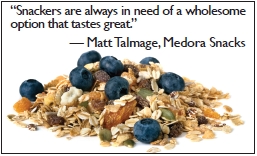 Second, make a special effort to reach out to teens, who desperately need the education and are starting to make their own decisions about food. Briggs calls this a “huge opportunity” for retailers, and her sense is that few health food companies are doing so. Also, talk to parents about what is and isn’t appropriate for kids; offer samples if it helps convince a finicky child to try something new.
Second, make a special effort to reach out to teens, who desperately need the education and are starting to make their own decisions about food. Briggs calls this a “huge opportunity” for retailers, and her sense is that few health food companies are doing so. Also, talk to parents about what is and isn’t appropriate for kids; offer samples if it helps convince a finicky child to try something new.
And don’t forget young adults and older individuals. According to Christine Brown, director of marketing for Natural Snacks, LLC, Addison, IL, market research indicates that the 18–28-year-old demographic are the most interested in trying healthier snacks. She adds, “The 60+ age group is looking for healthier snacks (like those low in sodium for health issues).” 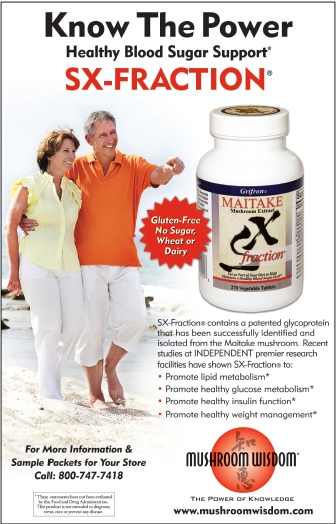
Last, don’t forget the basic necessities of choosing healthy snacks for your grocery aisles: it has to taste great and be satisfying. “This is the minimum requirement for a snack,” says Herzog. “On top of that, convenience is usually important…everyone wants an easy, convenient snack. It may be surprising, but a lot of consumers see peeling a banana as inconvenient and messy.”
Luckily, there are lots of options in the healthy snacks arena that satisfy all these requirements. “The best choices are high fiber, high protein and low glycemic with low naturally occurring carbs,” notes Doug Foreman, CEO and founder of Bean Brand Foods and Beanitos!, Austin, TX.
Around the Clock
One important way snacks contribute to a healthy diet is when consumers choose to eat five smaller meals per day. “Snacks can help bridge the gap from one meal to another or act as small meals themselves,” says Todd Einig, sales manager for New England Natural Bakers, Greenfield, MA. He offers an example from his company’s line of granolas: “One of New England Natural Bakers’ chewy granola bars could represent a healthy 120–130-calorie breakfast or a portion of a small breakfast. This bar could be paired with juice, yogurt or piece of fruit to make up a satisfying small meal that would represent only about 250 calories.”
Snacks comprised of fruit and vegetables are great for small meals, Herzog believes, but despite their nutritional importance, they’re often on the chopping block. He states, “Research shows that between 75% and 90% of Americans do not eat enough fruits and veggies. For me, I focus on trying to get the right balance of foods and nutrition. It’s not always 100% possible, but I try not to lose focus of that as I plan my meals and snacks.”
 Some snacks are particularly beneficial at certain parts of the day.
Some snacks are particularly beneficial at certain parts of the day.
Healthy mid-morning munchies. When the tummy starts grumbling in the slump between breakfast and lunch, tell shoppers not to reach for that extra cup of coffee and breakfast pastry. Rather, Foreman advises to try “anything high protein and high fiber, which helps to keep hunger in check and gives your body good fuel to burn.” A good source of protein should help maintain energy for several hours. He adds that his company offers snack chips made out of beans, which are “ideal” as a high-fiber/high-protein snack.
Similarly, high-protein nuts and nut butters can be a great mid-morning snack, states Orr, because they are “substantive, high in protein and help stave off hunger.”
Other good choices, says Einig, are those that “pack energy and help brain function.” These include dried fruits, whole grains, whole fruits and natural fruit/vegetable juices.
Byrd is on board with the fresh fruit and nuts combo, especially for children. “We advocate a lower-carb, low-sugar snack so they can focus on their school work,” she says. “Carbs are better for after school and before sports.” She suggests that even yogurt topped with seeds and nuts is a good choice.
Briggs notes that most kids aren’t eating protein at breakfast, so mid-morning may be a good time to fit it in. “If they have a bar,” she says, “it should have some nuts and seeds in it.” And, it should be low in sugar; less than 10 grams per serving is best, Briggs and Byrd feel. Having extra fiber helps, too.
The pair also promote hard-boiled eggs as snacks and small meals to satiate hunger and offer great nutrition.
Pleasing the lunchtime crowd. What’s more American than a sandwich and chips for lunch? Many companies interviewed for this piece commented on the right and wrong way to do chips. First, take note of the ingredients; they should be healthy and offer satiety. “Our tortilla chips are a great snack because you get a lot of volume and fiber (which makes you feel full), and it’s a whole grain, so it’s healthier,” Brown states. “What’s more, our new multigrain blue and white tortilla chips are reduced fat, low in calories and low sodium. They make an excellent side to any lunchtime sandwich or salad.”
Bean- and vegetable-based may be good alternatives to regular potato chips, too, which Foreman feels don’t offer as much nutritional benefit.
Matt Talmage, marketing manager of Medora Snacks (maker of PopCorners), Freeport, NY, raises a similar point. He speaks of a new popcorn snack that is low in calories, but offers a chip-like experience. He states, “Sea Salt PopCorners are a healthier alternative to potato chips that pair just as well with lunchtime sandwiches and wraps.”
Popcorn can be a healthy choice at lunch since it’s low in fat, high in fiber, and helps control hunger. Says Bastian, “Two-and-a-half cups of Angie’s Classic or Caramel are only 150 calories; Angie’s Lite for the same amount is only 120 calories. Plus, a bowl of Angie’s is a good way to grab fiber in a product that’s slightly sweet and slightly salty and filling.”
Brown also believes retailers can offer single-serve packaging for those who need help knowing when to stop. “In my opinion, portion-controlled snacks will help a person not to overeat,” she says.
Einig offers other snack ideas for your salad-eating clientele. “You can’t go wrong with any mixture of fruits, nuts and seeds,” he states. “Most go well mixed in a salad for lunch or alone as a separate snack.”
Beating the 3:00 blues. Around 3:00, many people need a pick-me-up, but don’t want to spoil their appetites for dinner. Foreman reiterates that shoppers must not ruin a day filled with healthy foods by choosing tempting junk food: “If the snack has no nutritional value, then you are consuming empty calories and you will not feel full for very long. A snack should help you avoid hunger as long as possible.”
The afternoon can be a time to lose self control, so Brown believes 100-calorie packs are great options. “Here is where Michael Season’s 100 Calorie Baked Snacks are a good fit. You actually get a lot cheese puffs or cheese curls. They’re a treat without the guilt,” she states.
A little spice can also go a long way toward fending off hunger pangs. Talmage recommends the cheesy jalapeno variety of his company’s popcorn chips (PopCorners), which “pack a huge amount of flavor into an air-popped chip that is low in calories. It’s enough to wake up your taste buds without filling you up or weighing you down.”
On the other end of the taste spectrum, Einig believes that dark chocolate in moderation is another great afternoon pick-me-up.
For children needing an after-school snack around this time, Orr recommends nuts, fruits and vegetables. “Fruit slices dipped in almond butter are a great after-school snack.” Her firm makes several varieties of nut butters that are bound to please any child’s taste buds.
Freeze-dried fruit snacks (like those from Funky Monkey Snacks) may also be appealing as after-school snacks. States Herzog, “Each ounce of Funky Monkey contains three servings of fruit.” The firm’s proprietary freeze-drying technology ensures an all-natural crunchy snack, without the Styrofoamy texture.
For parents looking to identify healthy, but tasty snacks for kids, Briggs believes her firm’s Kids Kritics Approved Seal can help. “Our mission is to make it easy for families to eat healthier foods that taste good,” she states. A panel of children is gathered to taste foods for their favorites. Foods can only be tested if they meet certain nutritional requirements. Those that pass can use the official seal on product packaging.
Sleep-easy snacks. Loading up on sugar or caffeine is a great way to ruin a good night’s sleep. But there are some after-dinner snacks that could benefit healthy sleeping. According to Brown, “Eating a bedtime snack that combines a concentrated dietary source of tryptophan with a healthy carbohydrate-rich food may help.” A couple of slices of turkey could do the trick.
Byrd agrees with the idea of carbs in the evening, though not refined white rice and other carbohydrates because they convert into sugar in about 20 minutes. “They tend to raise insulin levels because they aren’t balanced by enough fiber,” she states. On the other had, complex carbohydrates can offer long-term energy and also a calming state. “Brown rice can help the adrenal glands,” Byrd points out. “So if you have a stressed out kid who’s running out to soccer practice, giving them a healthy brown rice bar will actually calm them down plus give them energy.”
What’s Next in Snacks?
Though the snack-food category has some mainstay products that have been and will be enjoyed for years, snacks are also an easy way for shoppers to try something new and different.
According to those interviewed for this piece, the following are trends to keep an eye on for your nibbling shoppers:
• Gluten-free and allergen-free foods.
• Low-sodium options.
• Sweet and salty flavor combinations.
• Healthier alternatives to traditional potato chips.
• Air-popped products.
• Sensible sizes and portion control.
Another promising trend noted by food makers is increased interest in healthier snacks. States Bastian, “In 2010, a report by food industry consultants Technomic revealed that 35% of U.S. consumers are choosing healthier snacks.”
So, the message about the benefits of healthy snacking may be reaching the masses. This bodes well for all who care deeply about good health and good food—especially in small bites. WF
References
1. The NPD Group, Inc., “NPD Looks Into the Future of Eating and Finds A Whole Lot of Snacking Going On,” press release distributed August 31, 2009, www.npd.com/press/releases/press_090831.
html, accessed Feb. 17, 2011.
2. A. Aubrey, “New Trend Shows Kids Snacking Every Few Hours,” March 2, 2010, www.npr.org/templates/story/story.php?storyId=124248337, accessed Feb. 17, 2011.
Published in WholeFoods Magazine, April 2011

